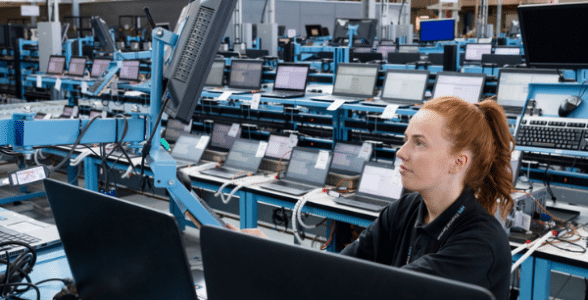
Sophie Dawson
Marketing Executive
September 4, 2019
This week is Zero Waste Week (2-6 September), an annual awareness campaign for reducing the amount of waste that goes into landfill, making it the perfect time for organisations to review their environmental impact and consider the steps which can be taken to become more environmentally friendly.

DTP’s War on Waste
DTP are now in a position where we send zero% of our waste to landfill and have been for the last 10 months due to innovation by the waste companies who can now turn unrecyclable waste into Refuse Derived Fuel (RDF).
In 2019, a record 53.6 million metric tonnes of electronic waste (E-waste) was generated worldwide - up 21% in just five years
DTP Services
DTP offer a service that specialises in the re-marketing, re-use and recycling of redundant IT equipment ensuring that the following requirements are addressed:
• Optimum return on investment
• Absolute data security
• Environmental and ethical propriety
• Legal and regulatory compliance
• Complete audibility
Despite an intention to re-use as much equipment as possible, there naturally comes a time when IT asset disposal is the only viable option. Equipment that is deemed either unfit or not economically viable for resale or re-use will be sent for recycling, materials recovery and disposal. DTP guarantees that all equipment will be broken down and recycled in accordance with all relevant legislation.
DTP are also bsi ISO 14001 Environmental Management accredited
-

E-Waste
E-Waste contains toxic components including:
- Mercury
- Lead
- Cadmium
- Polybrominated Flame Retardants
- Barium
- Lithium
- Polyvinyl Chloride
-

The Circular Economy
The traditional linear “take, make, dispose” production model is no longer viable and a fundamental shift is needed toward a more circular and low-carbon model.
The Circular economy aims to keep products, components and materials at their highest utility and value at all times, and eliminate waste across a product’s lifecycle through superior design and re-use.

The Circular Economy
The traditional linear “take, make, dispose” production model is no longer viable and a fundamental shift is needed toward a more circular and low-carbon model.
The Circular economy aims to keep products, components and materials at their highest utility and value at all times, and eliminate waste across a product’s lifecycle through superior design and re-use.
HP has committed to transforming its business model to span everything from how they source to how they design, deliver, recover, repair, and reuse products and solutions.
Take a look at HP’s infographic – The Impact of E-Waste
IT asset management services
Hewlett-Packard Enterprise’s Asset Upcycling Services retire IT assets, ensuring that they are in a sustainable and secure manner, and extract value for innovative projects, including data cleansing and environmentally responsible removal, upcycling or recycling.

